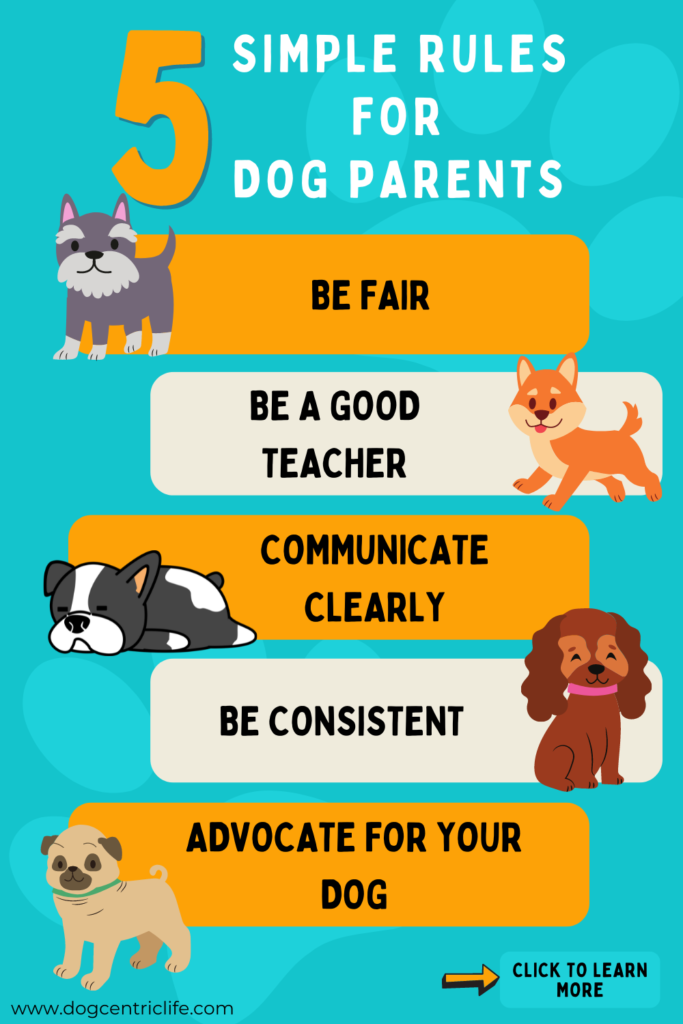Being a dog parent is both a joy and a privilege… but also a big responsibility. When we do share our lives with dogs some of our primary responsibilities are ensuring they receive regular and preventative veterinary care, they are fed a healthy, balanced diet and they have an environment where they are safe, secure and loved. Though there isn’t a one-size-fits-all guide there are some simple rules for dog parents to follow. These will not only benefit your dog, but in turn, will benefit you. Your dog will thank you with love and affection… and what could be better than that?
Rule #1: BE FAIR
It is important to understand your dog’s perspective. Dogs are not people. Seeing the world through your dog’s eyes and learning more about how their minds work will help to build a stronger relationship between you and your dog.
Rule #2: BE A GOOD TEACHER
Providing guidance and direction for your dog helps enable them to make the right decision. Instead of telling your dog not to do something, teach them the behavior you would prefer they do. This is where verbally reprimanding your dog doesn’t work as it doesn’t actually teach your dog what they should have done instead.
Rule #3: COMMUNICATE CLEARLY
When you see your dog exhibiting a behavior that you want (i.e. lying down on their bed) communicate to your dog that this is desirable by rewarding them! When you reward your dog for behaviors you want to see, you increase the likelihood these behaviors will occur again. Rewarding your dog frequently for these behaviors will help your dog learn more quickly.
Rule #4: BE CONSISTENT
Inconsistency and unpredictability from you causes fear and anxiety in your dog which can lead to various behavioral problems. Remain consistent by setting the rules and ensuring that all members of the household stick to them. As an example, don’t reprimand your dog for jumping up on you one day and then allow it the next day… this is confusing for your dog.
Rule #5: ADVOCATE FOR YOUR DOG
Dogs can’t speak for themselves. They communicate through body language and you should be aware of these signals to help protect your dog from overwhelming situations (i.e. a group of children running over to greet your dog). As your dog’s advocate you should be prepared to intervene in a situation that could negatively impact your dog.







0 Comments